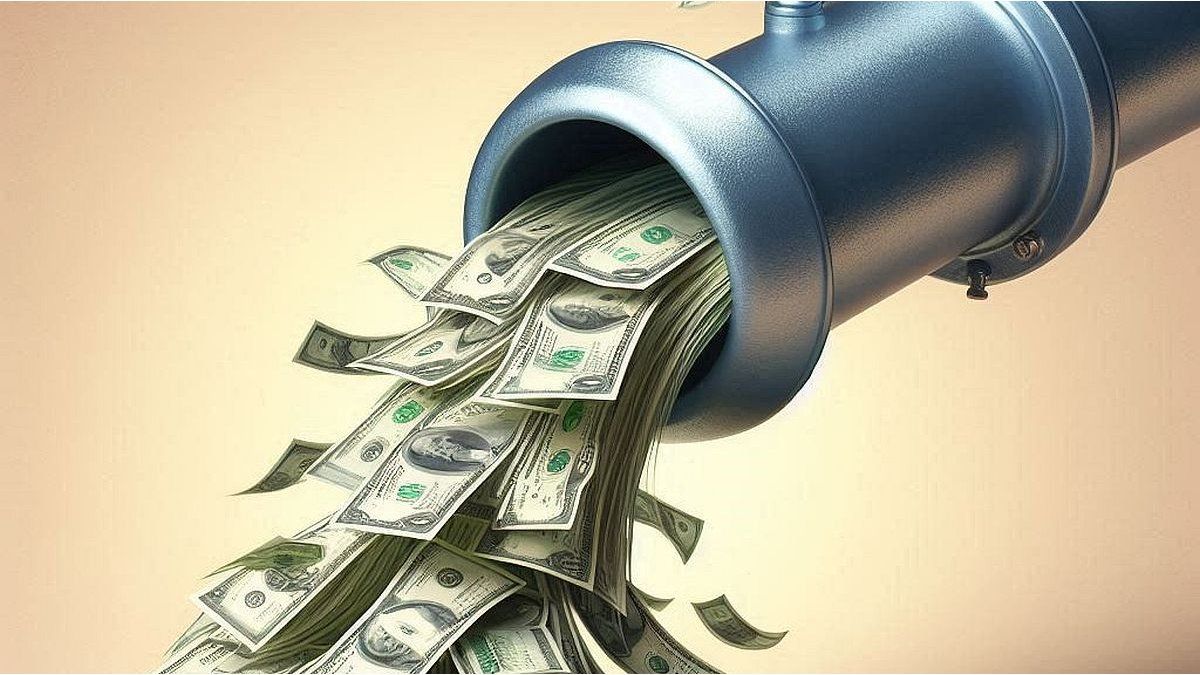Shall we go for tap one?
– In 6 months Argentina stopped having a fiscal deficit and started having a fiscal surplus. If there was something that was wanted to happen, it finally happened. The Minister of Economy will use the pesos from the surplus to buy dollars and use them for future interest payments on the debt. With this, he seeks the intertemporal sustainability of the debt.
Tap two?
– Bonds totaling $17.7 billion had been issued with a guarantee that the holder could execute and demand full payment when he wanted. The government managed to cancel 78% of these guarantees, of course paying a premium so that the banks would give up this right. It is likely that they will be offered an exchange for the remaining 22%; the tap was not turned off, but it went from a stream to a drip.
Tap three?
– During the Kirchner era, the government had a fiscal deficit, and to finance it it resorted to the issuance of pesos by the Central Bank. The amount of pesos issued was so large that, if that money remained in the market, hyperinflation would be very likely. The same Central Bank that issued pesos to finance the treasury, then absorbed those pesos via a bill and paid the holders (the banks) an interest rate that was higher than the fixed-term rate they paid. A round business (for the banks), the Central Bank carried an enormous liability, and from this tap it filtered a monthly interest payment that was enormous. The plumber arrived and put the debt that was in the Central Bank back under the orbit of the Treasury, which is where it should be. This Monday, the Central Bank’s remunerated monetary liabilities will be exchanged for a fiscal liquidity bill (LEFI). This debt will be in the treasury, which will pay the interest (capitalize it), and whose rate will be set by the Central Bank and will constitute the monetary policy rate. Some $20 billion would be issued. The tap is closed, since the rates that are capitalized are not paid, they are refinanced.
Tap 4?
– The Central Bank buys dollars and issues pesos, which generates money issuance. Now it buys dollars at $926.75, and can sell them on the market at a value of $1,330, thus sterilizing the pesos it issued and keeping the rest. For each dollar it receives, it sells 0.70 cents and keeps 0.30. Although the reserves will not grow at the same rate as before, the increase will be genuine. The problem is that between June 1 and July 16 it barely bought US$177 million, and it would have lost them with the sales on Thursday and Friday. However, the commitment would be to sterilize all the pesos issued from April 30 onwards, which adds up to a figure of more than US$1.5 billion.
At this rate we will not have pesos
– Don’t rush, the money supply as of June 30th amounts to $12.4 trillion, which measured at the wholesale exchange rate of June 30th is equivalent to US$13.6 billion. There are plenty of pesos to withdraw until it becomes scarce.
How much are the deposits in pesos?
. – As of June 30, they total $68.6 billion, which at the exchange rate of that date would be approximately US$75,287 million.
How much does the treasury owe in pesos?
. – The debt in pesos amounts to the equivalent of US$ 41,547 million, and in pesos adjusted for inflation to the equivalent of US$ 143,480 million, between both concepts US$ 185,027 million.
Can the clamp be lifted?
– It should be noted that if you add up the money supply, deposits in pesos and debt in pesos, you get to the whopping figure of US$ 232,367 million, versus gross reserves which as of June 30th totaled US$ 29,011 million, and in real terms are negative. There is a clear problem of stock.
Not all depositors will switch to dollars, nor will holders of peso bonds, which in many cases are held by banks.
– That’s true, but it’s still a point to consider. The stock of pesos that this government inherited is enormous, while the stock of dollars does not exist. Therefore, those who advocate removing the currency controls now, it’s typical of a science fiction movie, we can express it, we can see it, but it can’t happen.
Are we in a new scenario?
– In the first half of the year, the government put the public accounts in order and achieved what no one else in Argentina could achieve: 6 months of fiscal surplus and a substantial drop in inflation. In the second half of the year, we entered a new stage of the economic plan, with zero emission, where the interest rate is very positive compared to inflation, and this will bring with it a major recession.
Why does the dollar go up?
– Many economic actors, as a reflex effect of what happened with Kirchnerism, cling to the dollar as a life preserver, what they have not seen is that said life preserver has punctured. The recession is so great that it is impossible for the dollar to continue rising for long. For example, the internal rate of return of the Lecap is 67.2% per year as of March 2025, the projected inflation for the next 12 months would be around 40% per year, this implies a positive rate of 19.4% per year. With these rates, as long as we see that inflation continues to fall, it will not make sense to be positioned in dollars.
How much is the dollar worth today?
. – The MEP dollar is worth $1,330, if you add a 67% annual rate, in 12 months it should be above $2,221.1 to beat a LECAP. If the government is going to absorb pesos from the economy, it is more likely that the dollar will rise much less than inflation, and that the interest rate will remain positive against inflation.
What will business be like in the second half of the year?
. – Very different from those of the first semester, during the first semester the assets that we liked had a great evolution, sovereign bonds had a great rise in parity, and paid interest and amortization in January and July. Something similar happened with inflation-adjusted peso bonds. Negotiable obligations went from yielding double digits to a single digit. Inflation from December 7, 2023 to date easily exceeded the evolution of alternative dollars. Soybeans and corn fell in price, and could increase their decline in the local market. Instruments that adjusted for dollar linked did not have a positive evolution. Money was made with Cedears.
What’s coming up for the second semester?
– I’ll leave that to private reports. The way of doing business is changing dramatically, and new instruments will surely appear on the scene, where we will have to pay special attention to the market rate map, which will give us the key to where the government’s decisions are taking us.
Do we have a map?
. – It’s in today’s edition, and you’d be surprised at the relationships you’d see.
Before I finish how the soybean issue continues
. – I gave my opinion in December, January, February and March, they called me crazy. In the latest report on global supply and demand, the stock/consumption ratio is at 31.8%, when it should be balanced at 25%. There are 128 million tons of soybeans left over, out of a global consumption of 402 million tons. It is impossible for us to have a rally with these figures, with Brazil projecting 170 million tons of production for the next campaign, and China with a shrinking economy and high soybean stocks in the face of the possible victory of Donald Trump in the American elections, and the start of a new trade war as in 2018, when Argentina lived with soybean prices below the current ones.
What are the numbers for corn and wheat?
– In the private reports you will not only find these numbers, but also the USDA livestock reports, where some indicators have been misinterpreted, but I will leave that for you in the private one.
Are you very commercial?
. – It is probable, but as in the trick, what it costs is worth.
Financial Analyst
Disclaimer: Salvador Di Stefano SRL is not responsible for the final result of the opinions expressed in this report on economic and financial operations carried out by the user.
Source: Ambito
David William is a talented author who has made a name for himself in the world of writing. He is a professional author who writes on a wide range of topics, from general interest to opinion news. David is currently working as a writer at 24 hours worlds where he brings his unique perspective and in-depth research to his articles, making them both informative and engaging.




